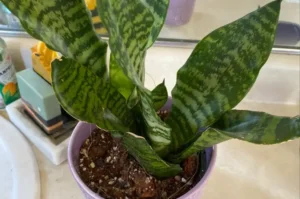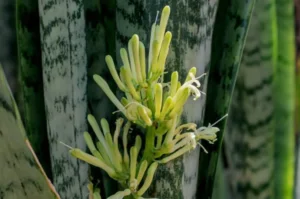Snake plants, also known as Sansevieria, are beloved for their striking appearance and resilience. But have you ever wondered how these hardy houseplants grow? Do they spread out and take over your space? Let’s dive into the fascinating growth habits of snake plants.
Do Snake Plants Spread?
Snake plants (Sansevieria) grow slowly, with leaves that typically grow a few inches per month. They can tolerate a range of light conditions but prefer bright, indirect light.
How Snake Plants Grow
Unlike many plants that grow from seeds, snake plants primarily spread through their underground root system, called rhizomes. These thick, horizontal roots send up new shoots, which develop into the upright, sword-like leaves we all recognize. Over time, this rhizomatic growth creates a cluster or colony of snake plants.
Types of Spread in Snake Plants
There are two main ways snake plants spread:
- Rhizomatic Spread: This is the most common type. New shoots emerge from the underground rhizomes, gradually expanding the plant’s footprint. Some varieties are more vigorous than others in this regard.
- Pup Production: Some snake plants produce “pups,” which are baby plants that grow at the base of the mother plant. These pups can be separated and repotted to create new individual plants.
Factors Influencing the Spread of Snake Plants
Several factors can affect how quickly and extensively your snake plant spreads:
- Variety: Certain snake plant varieties are naturally more prone to spreading than others.
- Pot Size: A larger pot provides more space for rhizomes to grow, encouraging spread. If your snake plant is rootbound in a small pot, it may not have as much space to spread as it would in a larger pot.
- Light Levels: Snake plants prefer bright, indirect light. In lower light conditions, they might spread more slowly.
- Nutrients: While not heavy feeders, snake plants will grow and spread more vigorously with occasional fertilization.
Do snake plants grow and spread naturally?
Yes, snake plants spread through underground rhizomes and sometimes by producing pups. The speed and extent of their spread depend on the variety, pot size, light, and nutrients. This natural growth habit can be managed through proper care and propagation techniques.
Managing the Spread of Snake Plants
If you want to control the spread of your snake plant:
- Choose the right pot: Select a pot that’s just slightly larger than the root ball. This will allow for some growth but not unlimited expansion.
- Divide and Repot: When the plant becomes crowded, gently remove the snake plant from its pot and separate the pups from the main plant and repot them individually. This is a great way to propagate new plants and manage the size.
- Pruning: If your snake plant is getting too tall, you can prune the leaves to maintain a desired height.

Benefits of Spreading Snake Plants
There are a few great reasons why the spreading habit of snake plants is actually beneficial:
- Easy Propagation: You can easily create more snake plants without having to buy new ones.
- Fuller appearance: A spreading snake plant can create a lush, full appearance, making it an attractive focal point in any room.
- Air Purifying: More snake plants mean more air purification in your home!
A Note on Invasive Potential
In some regions with warm climates, certain snake plant varieties can become invasive in outdoor settings. It’s essential to research your local regulations and choose appropriate varieties if planting outdoors.
Conclusion
Snake plants are an excellent choice for both indoor and outdoor gardening. Understanding their growth habits and spreading behaviors allows for effective management and maximizes their benefits. With proper care, these resilient plants can enhance your home or garden with their beauty and air-purifying qualities.
Frequently Asked Questions (FAQs):
Do all snake plants spread the same way?
Not exactly. While all spread through rhizomes, some varieties produce more pups than others.
Is it bad if my snake plant is spreading a lot?
Not necessarily. It’s a sign of a healthy plant! Just manage it to suit your space.
Why is my snake plant spreading out?
Usually due to insufficient light, overwatering, or needing repotting. Move to brighter (indirect) light, water less often (allow soil to dry completely), or repot if root-bound.
SEO Managed by Muhammad Uzair







2 thoughts on “Do Snake Plants Spread? Understanding Their Growth Habits”
I regard something genuinely special in this web site.
I truly appreciate this post. I have been looking all over for this! Thank goodness I found it on Bing. You have made my day! Thanks again